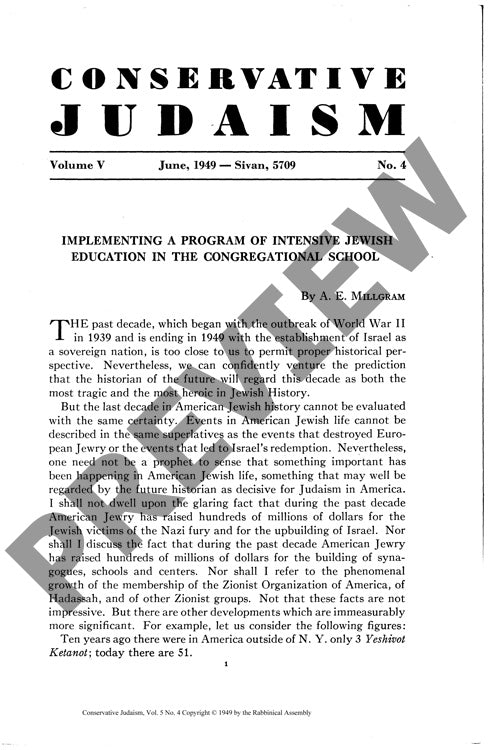Implementing a Program of Intensive Jewi
Couldn't load pickup availability
American Jewish education underwent a dramatic transformation in the post-World War II era, as Conservative congregational schools embraced intensive educational programming amid unprecedented institutional growth. Between 1939-1949, the American Jewish community established 51 new yeshivot ketanot outside New York—up from just 3 a decade earlier—while simultaneously expanding Hebrew camps, kindergartens, and collegiate programs through organizations like Hillel. Drawing on statistical analyses of institutional proliferation and theoretical frameworks of Conservative Jewish educational reform, this research reveals how multiple factors converged to enable this educational renaissance, including increased Christian emphasis on religious education and emerging psychiatric research supporting Jewish identity formation. The findings demonstrate that rabbis most effectively served as "architects of Jewish education" rather than direct educators, focusing their efforts on raising educational standards, developing professional teaching staff, creating home-school continuity, and identifying promising students. Successful implementation of intensive Jewish education programs ultimately required enhanced rabbinical training in educational methodology, improved teacher compensation and tenure, and sustained institutional commitment to long-term programming rather than superficial cultural transmission.

More Information
-
Physical Description
-
Publication Information
Published 1949
ISBN
-
Publication Credits
Abraham Millgram

